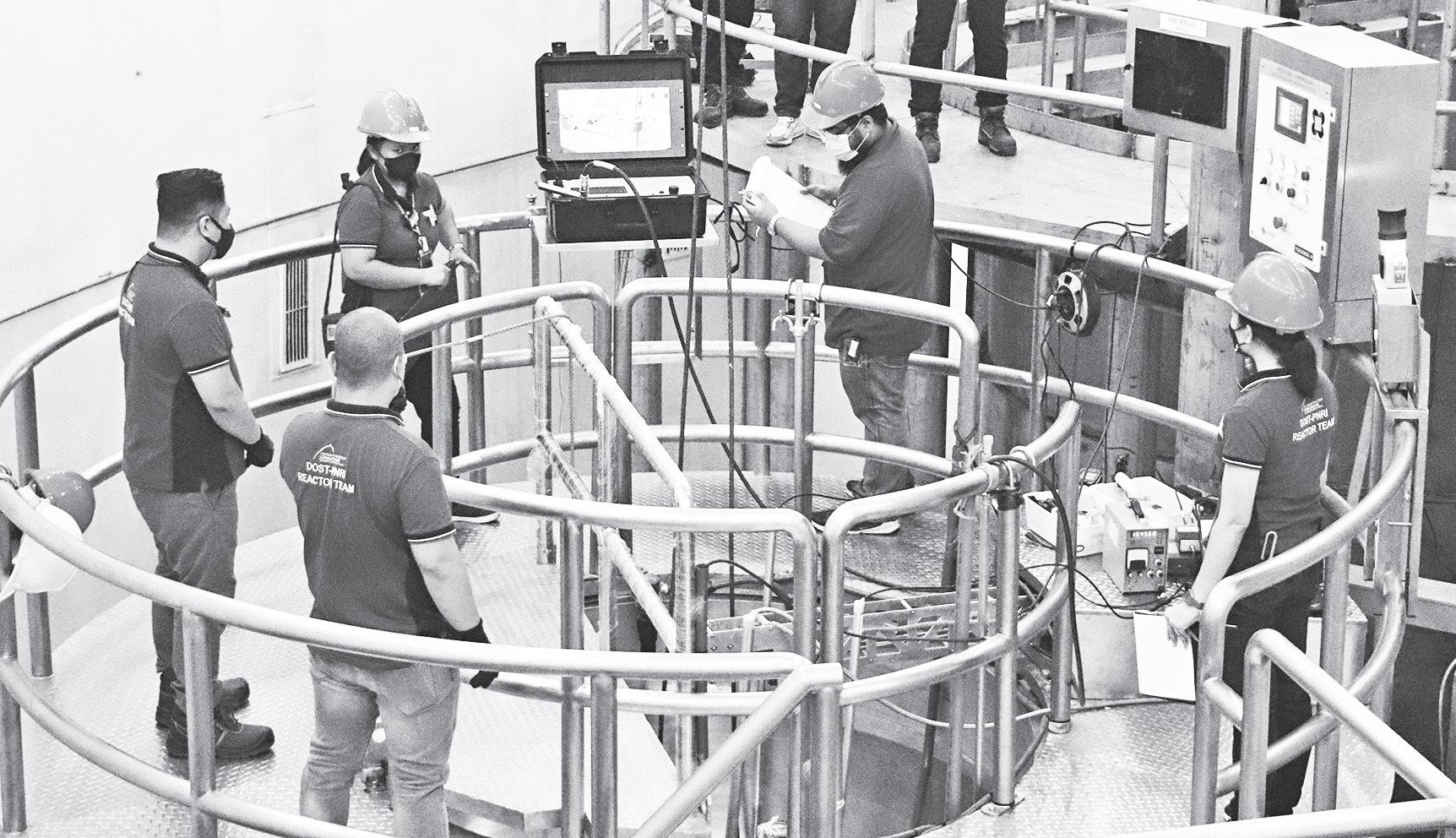
9 minute read
FOR RESEARCH, HUMAN RESOURCE DEVELOPMENT-AND NUCLEAR POWER PHL nuke research reactor fully operational
By Lyn Resurreccion
THE country’s first and only nuclear reactor training facil - ity is finally fully operational as the Philippine Nuclear Research Institute of the Department of Science and Technology has recently granted the authorization to operate the Philippine Research Reactor-1 Subcritical Assembly for Training, Education and Research (PRR-1 Sater), said the DOST-PNRI in a news release.
After it was commissioned in June 2022, or nine months ago, the granting of the authority, through the institute’s Nuclear Regulatory Division, opened the facility to serve its stakeholders from the research and academic community for their growing need for advanced training and research requirements on nuclear technology.
DOST-PNRI explained that the PRR-1 Sater is classified as a subcritical reactor with zero-power configuration and designed to be inherently safe for use solely in nuclear-related training, education and research, not for power generatios.
Thus, it will support PNRI-initiated education programs and courses—including reactor engineering, neutron physics, reactor physics, nuclear safety and radiation dosimetry, among others.
PNRI has entered into partnerships with educational institutions, such as in University of the Philippines Diliman, since 2019, and Mapua University since 2020, to start the offering of the courses.
Triga nuclear fuel loaded
THE DOST-PNRI began the loading of Training, Research, Isotopes, General Atomics (Triga) nuclear fuel in the core of the PRR-1 Sater in June 2022. It signalled the start of the commissioning of the PRR-1 Sater, the DOSTPNRI said.
The Triga fuel is a uranium zirconium hydride alloy manufactured by US-based General Atomics and is wellknown for its inherent safety.
The PNRI said the commissioning of the PRR-1 Sater is a milestone for the country as the facility will provide significant support in re-establishing nuclear capabilities in the Philippines.
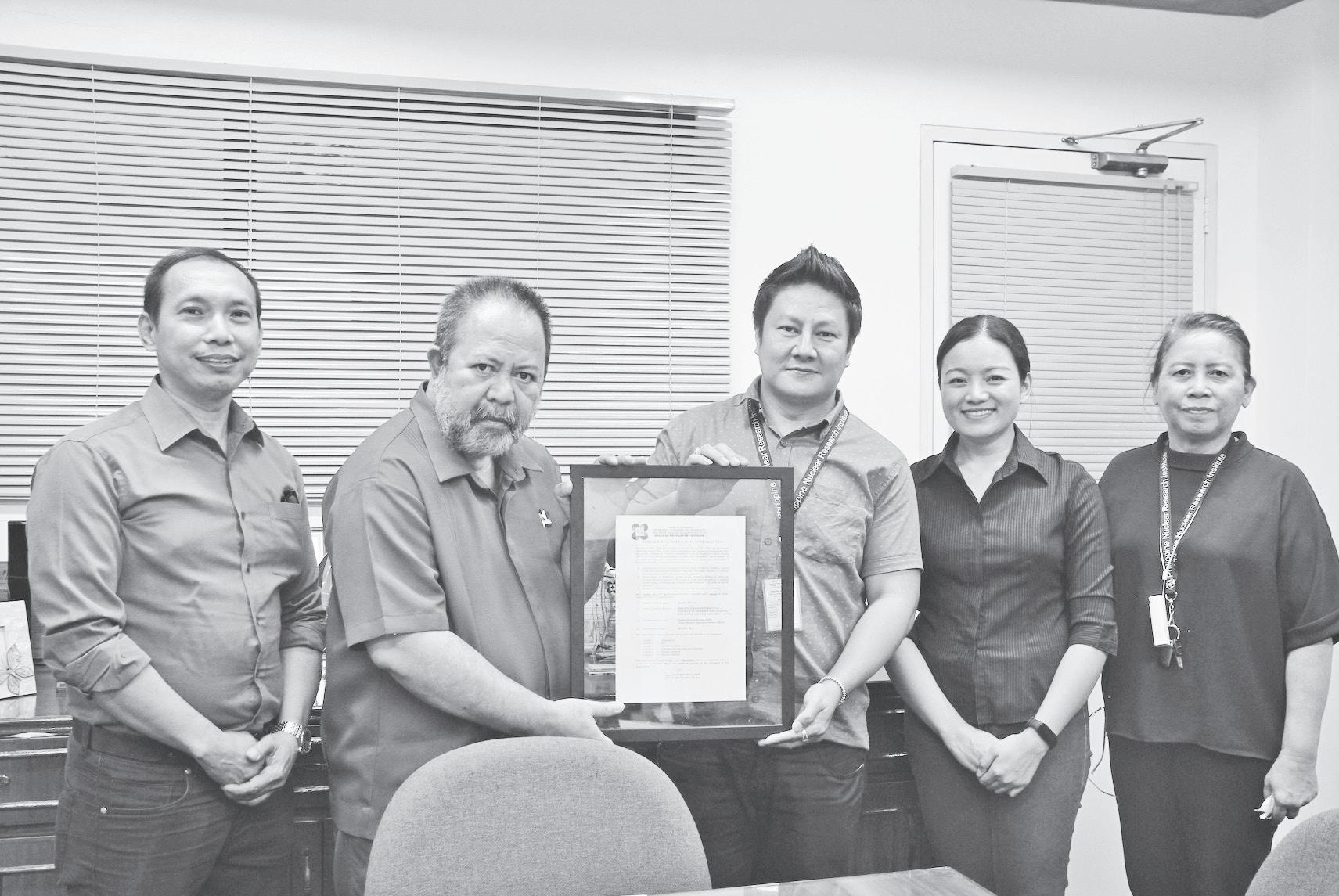
“This demonstrates that PNRI can handle nuclear materials. We’ve been handling it for the past 50, 60 years,” said PNRI Director Dr. Carlo Arcilla during the loading of Triga.
The DOST-PNRI explained that the PRR-1 Sater has the following objectives: support nuclear manpower development; accommodate local access to an operating nuclear facility; train reactor operators, users and regulators; engage stakeholders in nuclear and reactor engineering; and repurpose available resources of the historical PRR-1 facility.
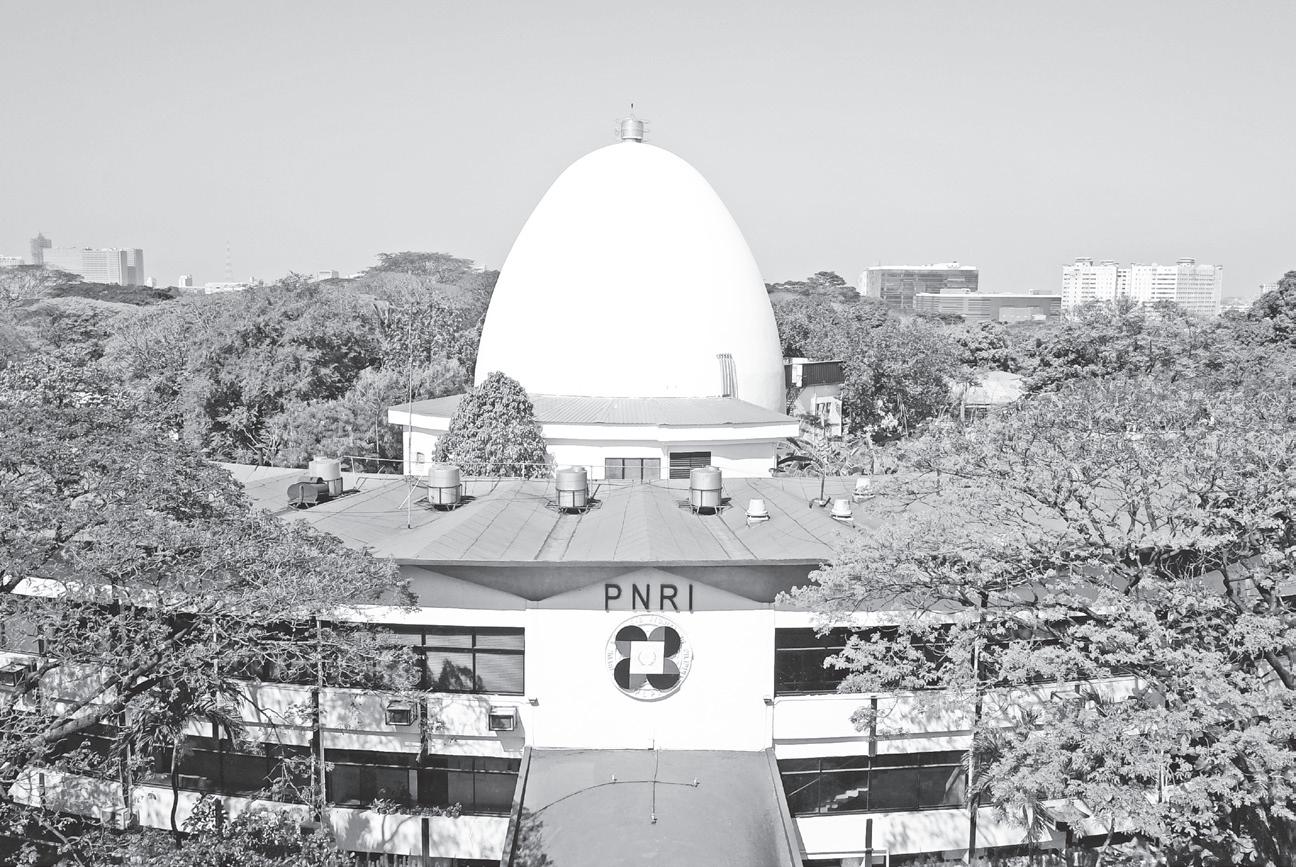
The project was first conceptualized in 2014, but actual work in the facility began in 2017. It is expected to be fully operational this year, 2023.
While not yet fully operational, the facility was opened for technical visits and awareness seminars on nuclear science and technology.
Atoms for Peace
BUILT as part of the US Atoms for Peace program to prevent the proliferation of nuclear arms after World War 2, the original PRR-1 facility was inaugurated in 1963 and was operational until its shutdown in 1988, leaving the country with no operating nuclear facility for the last 34 years.
It should be noted that the PRR1’s closure came after the Bataan Nuclear Power Plant (BNPP) was mothballed in 1986 owing to alleged safety and political concerns.
The BNPP was built by the administration of President Ferdinand E. Marcos, who was ousted in 1986.
With the establishment of the PRR1 Sater, the Philippines is now one step back on track in re-establishing its nuclear capabilities.
Paving the way for nuclear power program
THE new developments on nuclear technology in the country came after former President Duterte signed Executive Order (EO) 164 in February
Patch designer meets MULA Satellite scientists, receives prize
real testament of MULA’s future of wisdom, nationalism and sovereignty.
The three prominent stars are hoisted in a homogeneous position as the national flag, although the top-most star shines with eight primary rays mirroring the golden-yellow sun in the flag.
The symbolism of disaster resiliency is conveyed through the surrounding arches of MULA, where it depicts an ever-present beaming fiery rising, that even in the face of great adversity—there is hope to rebuild and revitalize.
28, 2022, that includes the potential use of nuclear power in the country’s energy mix, a Philippine News Agency (PNA) report said.
“This policy is the start of the national nuclear power program,” Energy Undersecretary Gerardo Erguiza Jr. was quoted in the news report.
The new policy stated that the country “shall ensure the peaceful use of nuclear technology anchored on critical tenets of public safety, national security, energy self-sufficiency, and environmental sustainability.”
Duterte issued the policy following the recommendation of the Nuclear Energy Program Inter-Agency Committee, which conducted a prefeasibility study and public consultation on the matter.
Through EO 164, Duterte has recognized that nuclear power can be a reliable, cost-competitive and environment-friendly source of energy based on the experience of highly developed countries.
“[A] Public Perception Survey on Nuclear Energy in 2019 indicated that almost 79 percent of Filipinos expressed approval or acceptability of the possible use or rehabilitation of an existing nuclear power plant,” the EO 164 was quoted.
It also showed that 65 percent approved the construction of new nuclear power plants and 78 percent are open to learning more about nuclear energy, the PNA said. It is important to note that current President Marcos Jr., in his July 2022 state of the nation address, agreed to consider the use of nuclear energy to address the Philippines’ growing power needs.
“I believe that it is time also to reexamine our strategy toward building nuclear power plants in the Philippines,” he was quoted in news reports.
He said that new technologies are available, including smaller-scale modular nuclear plants.
Nuclear engineering course HUMAN resources development is one of the Philippines’ current challenges in pursuing a nuclear power plan.
“The last batch of nuclear engineers graduated in 1984 from the University of the Philippines,” the DOST-PNRI noted.
The program ceased after the government shifted away from nuclear power and the mothballing of the BNPP in 1986, it said.
But beyond nuclear power, DOSTPNRI hopes that the recent interest of the academic sector in nuclear science will also extend to other nuclear and radiation applications, given the expertise of certain universities and colleges in various fields of study, such as in agriculture and medicine.

The DOST-PNRI is also strength - ening its nuclear training courses. Its Nuclear Training Center conducts more than 20 training courses annually for hundreds of professionals as well as undergraduates, covering topics, such as nuclear technology, radiation safety and protection, and nondestructive testing, to name a few, the institute said.
443 nuke plants worldwide the activities. We are so grateful that you are willing to help students to become interested in science and for giving us the opportunity to be part of this program,” said Clariza Valderama, a Grade 11 student in the ABM strand who now considers taking a STEM related course in college.
AT the end of December 2019, the global operating nuclear power capacity was 392.1 gigawatt electrical (GW[e]), comprising 443 operational nuclear power reactors in 30 countries, the International Atomic Energy Agency (IAEA) said in its web site.
“Overall, nuclear power capacity since 2011 has shown a gradual growth trend, including some 23.2 GW(e) of new capacity added by the connection of new units to the grid or upgrades to existing reactors,” the IAEA said in its June 25, 2020 report.
As of December 31, 2019, 54 reactors were under construction in 19 countries with a total of capacity of 5,7441 MW(e), IAEA added.
Installed nuclear power capacity under construction has remained steady in recent years, except for continuous growth in Asia, where a total of 5,5067 megawatt electric capacity (MW[e]) operational capacity (61 reactors) has been connected to the grid since 2005.
The NuLab bus was first launched in 2019 and aims to bring science closer to the youth, especially in rural areas. After a two-year pandemic hiatus, it returned on the road in 2022 and since then, it has been traveling to schools in underserved areas to provide students with access to quality science education.
MULTIMEDIA Studies student Jaden
Tomacruz, from the University of the Philippines Open University, received her award that includes a limited edition plushie and P20,000 cash prize from the Philippine Space Agency, for besting 21 other designers in the Multispectral Unit for Land Assessment (MULA) Satellite mission patch contest, said a PhilSA news release.
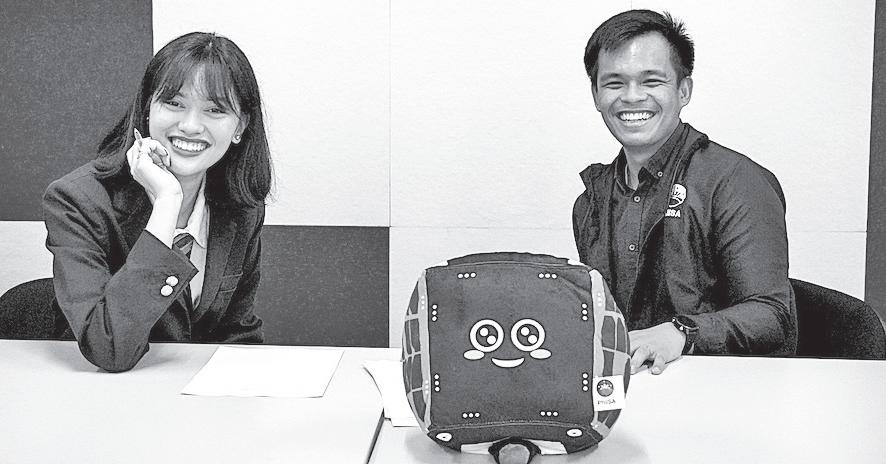
The official mission patch was unveiled in February 2023, after two rounds of judging and deliberations by the scientists and engineers from PhilSA.
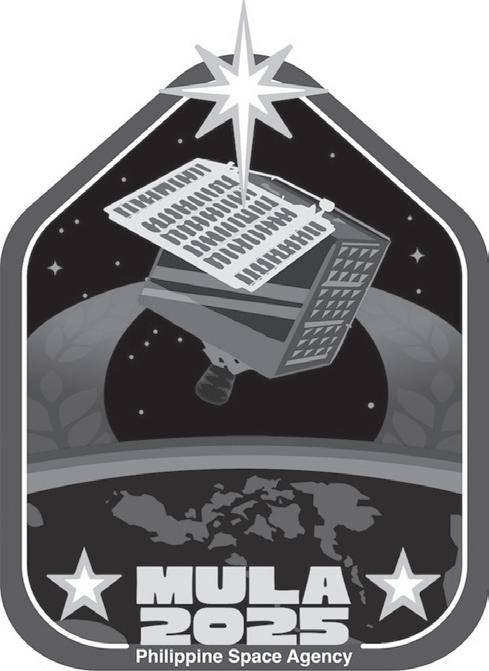
Night sky observer
GROWING UP, Tomacruz always had the fondness for observing the great night sky, its celestial bodies and phenomena that populate it, PhilSA said.
She believes that because of humanity’s innate curiosity, investing in space enables people to appreciate and care for the natural world better.
Now, at 20 years old, she has utilized astronomy through creative expression in design, writing and performance.
Tomacruz hopes to work in the space industry professionally as a creative person, hoping that her work will potentially spark more interest from the younger generation—like the way she did. MULA Mission Patch THE patch that Tomacruz designed draws heavy inspiration from both Neo-Cubism Art and Abstract Minimalism that are observed among modern Filipino painters, PhilSA said.
The color schemes used are a nod to previous mission patches. Its shape that embodies a pentagon, like a shield or crest, with rounded edges to signify the
Alongside, a silhouette of strands of wheat is embroidered through it, in correlation with the long historical and cultural significance of rice production in the Philippines.
Intrinsically, this satellite technology will help ensure, safeguard, and sustain the rich natural and human resources of the Philippines.
The typeface Cubao Free, popularly known as signboards hung on jeepneys, was used to manifest the amount of orbital commute MULA accomplishes.
The bold presence is sensed as space research and development progress to the next generation of satellites.
Furthermore, subtle likenesses of Balatik and Moroporo constellations allude to an acknowledgment of pre-colonization Filipino ethnoastronomy.
Philippines’ biggest observation earth satellite
MULA is the biggest Earth observation satellite being built by the Philippines. It weighs 130 kilograms and carries a TrueColour camera capable of capturing 5m resolution images covering around 73-thousand square kilometers in 24 hours, PhilSA said.
Data from MULA are envisioned to contribute to the country’s food security, disaster resilience, environment conservation and national security.
Mobile lab makes science lessons exciting for Bulacan students
WHEN the NuLab:STEM in Motion bus of the Department of Science and Technology-Science Education Institute arrived in the rural town of San Rafael, Bulacan, recently, the students of Maronquillo National High School did not expect they were going to have an exciting and fun-filled science adventure.
Unlike the Science Explorer, which visited the school in 2015, the bright, yellowcolored bus is more spacious, mimicking a science laboratory set-up and is equipped with more interactive and state-of-the art facilities.
It caters primarily to senior high-school students with advanced science, technology, engineering and mathematics (STEM) modules, focusing on science and technology (S&T) careers facilitated by the country’s top scientists and experts.
In one session, students were amazed as they explored the unseen world of microbes.
The module, discussed by University of the Philippines Diliman Assistant Professor Mark Tolentino, was an introduction to microbiology and allowed the students to use a microscope for the first time.
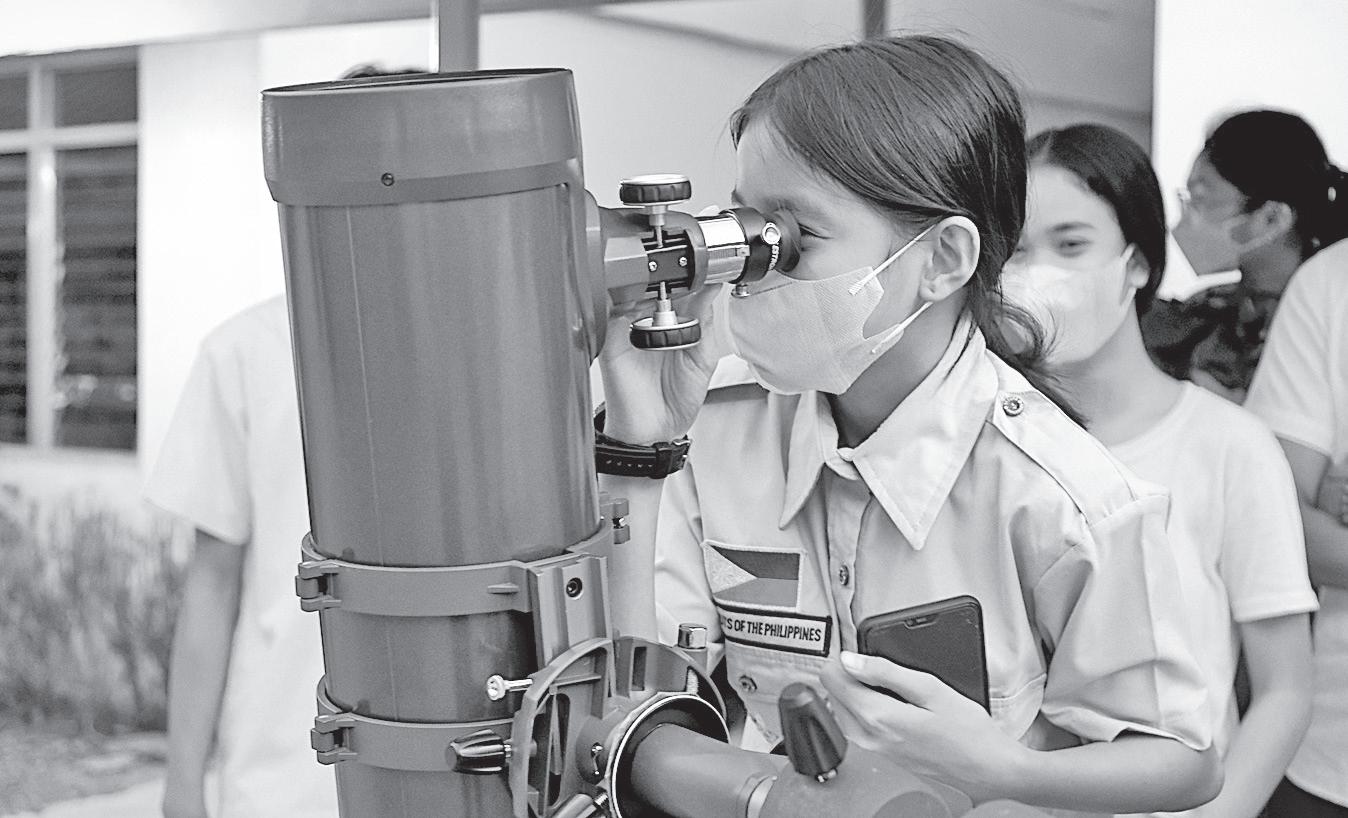
Another STEM session enjoyed by the learners was the chemistry experiment about light and colors facilitated by Michelle Macalingmot of the Philippines Science High School.
Using the provided colorimeter, students were able to identify the amount of light absorbed by the different given solutions.
Meanwhile, the sky viewing and astronomy session by Lordnico Mendoza of DOST-PAGASA is a favorite among students and teachers. They got the chance to have a glimpse of the moon, planet Jupiter and different constellations through the telescopes installed by the NuLab team.
Inside the bus, the students were also excited as they virtually traveled around the world and outer space using an astronomy software called Stellarium.
Within the four-day visit of NuLab in Maronquillo, around 250 junior and senior high-school students discovered their potential in STEM.
“I learned a lot, especially all of us enjoyed
“Our goal is to extend our service to the grassroots level and ultimately make our students choose science as an area of study when they reach college and later as a career. We hope that through this project, you’ll get to start a path in S&T,” shared Randolf Sasota, OIC of DOST-SEI Science Technology Manpower Education and Research Promotion Division.
Besides the STEM sessions aboard the NuLab bus, students were also given an orientation on the various scholarships that DOST-SEI offers to incoming college students through the “#Push4Science: Maging DOST scholar ka! Campaign.”
Through the students’ experience inside the NuLab and through the #Push4Science Campaign, DOST-SEI is hopeful that more students are inspired to be future engineers, scientists, inventors and innovators who will help contribute to the country’s development.
“With the scholarships that the Institute is offering, we hope to develop and produce a world-class S&T human resource as this is an important component of our socio-economic development. As long as there are students who show interest and potential to become S&T professionals, DOST-SEI shall remain committed to provide them opportunities to reach their dreams,” said DOST-SEI Director Dr. Josette Biyo in a statement.
The NuLab bus is scheduled to visit more public high schools in the Camarines Norte, Camarines Sur, and Bohol in the succeeding months.









